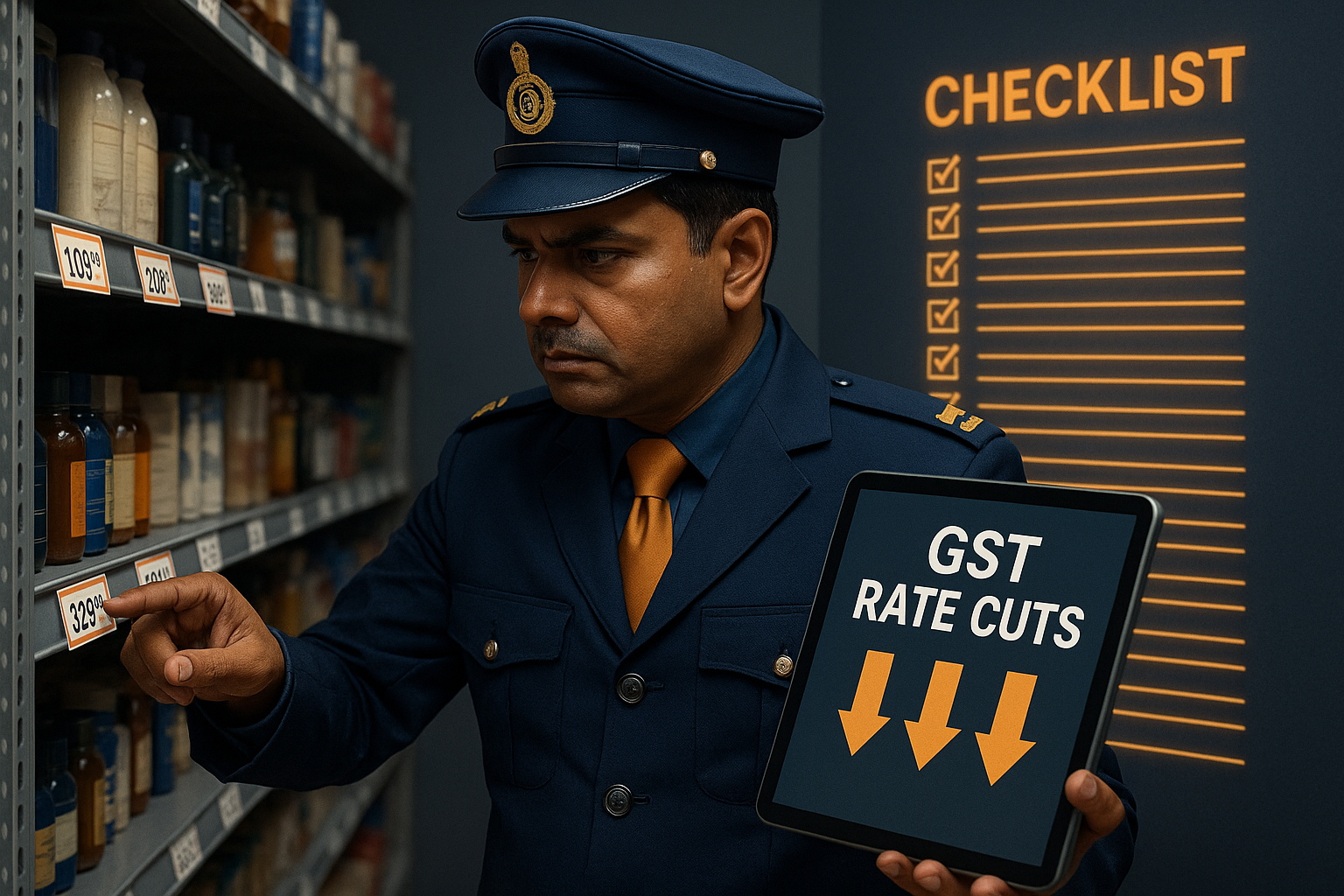Following the recent GST rate cuts under GST 2.0, the Central Board of Indirect Taxes and Customs (CBIC) has directed officials to track the prices of 54 key items to ensure the tax relief is passed on to consumers. The move aims to prevent profiteering by businesses and guarantee that households directly benefit from the reforms.
The decision reinforces the government’s commitment to consumer welfare, compliance monitoring, and transparent implementation of GST reforms.
Core Development
CBIC’s monitoring exercise will:
Cover 54 essential and consumer-facing goods and services, including food items, household essentials, and insurance premiums.
Ensure that reduced GST rates are reflected in market prices and not absorbed by companies as additional profit.
Help policymakers assess the effectiveness of reforms in driving affordability and stimulating demand.
Officials have been instructed to work closely with trade bodies, industry associations, and consumer organizations to track compliance.
Why Price Tracking is Crucial
Consumer Confidence: Ensures households experience the intended relief.
Market Discipline: Discourages unfair trade practices and profiteering.
Policy Credibility: Reinforces trust in GST reforms as a genuine affordability measure.
Stakeholder Impact
Consumers: Likely to see tangible benefits if monitoring translates to reduced retail prices.
Businesses: Required to maintain transparent pricing practices and align with compliance rules.
Government: Gains credibility by ensuring reforms deliver measurable outcomes.
Industry & Policy Reactions
Analysts note that this step signals the government’s strict stance on profiteering and sends a clear message that reforms must translate into real-world impact. While businesses may face tighter compliance scrutiny, the move is expected to enhance long-term consumer trust.
Challenges Ahead
Implementation Gaps: Ensuring price checks across diverse markets and regions.
Resistance from Traders: Pushback possible from sectors citing rising input costs.
Monitoring Capacity: Effective execution will require coordinated enforcement across states.
Strategic Outlook
The CBIC’s directive aligns with the larger vision of GST 2.0 — simplifying taxes while ensuring affordability for the masses. Robust monitoring of these 54 items could set a precedent for future reforms, making consumer benefit a central measure of success.
Why This Matters
Tax reforms are only as impactful as their delivery. By actively tracking prices, the government is signaling its resolve to translate policy into household relief while curbing any attempts at profiteering.












